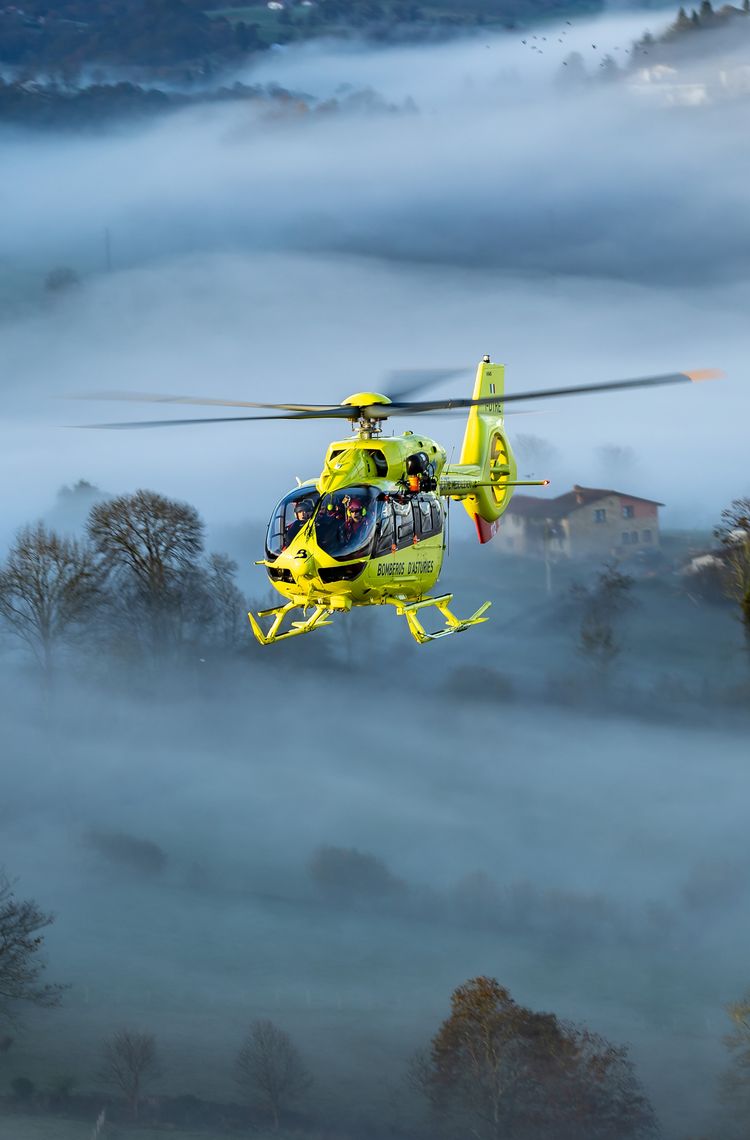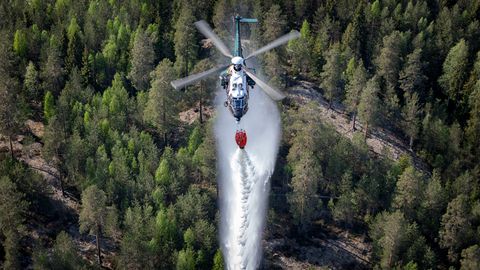W hat is the day-to-day life of the rescue team of the Asturias Emergency Service like since the arrival of the new five-bladed H145 operated by Eliance? Comprehensive air support at the highest level, told from behind the scenes.
The 112 call centre of the Asturias Emergency Service (SEPA) is now a hive of activity. Multilingual teams are responsible for dealing with calls from people with accidents, heart attacks or urgent needs calling from all corners of Asturias. Marta, the operator, receives a new call. A climber is calling from a rock wall in Picos de Europa, the rugged mountain range of Asturias, because his partner has fallen and injured his leg. There is no road access and they are hanging by ropes between the rocks. In less than 10 minutes SEPA has already mobilised its new H145 and the team, consisting of a pilot, two rescuers and an emergency doctor.
Search and rescue between walls
The coordinates of the injured individual are essential to find the scene of the incident, but 112 also uses the location of the person's mobile phone. "When we carry out a mountain rescue mission, it is essential that all four crew members know exactly what we are going to do and how we are going to do it: with a hoist, with skate support... And it is also essential to agree on our emergency exit in case the situation becomes complicated," explains José Luís Iraola, pilot of the H145 at Eliance.
In about 10 minutes, the H145 arrives at the climbing wall where the two colleagues are stuck. After an inspection of the site, the H145 locates the victims on a rocky balcony with a surface area of only about two metres. The only way to reach them is by hoist, a 90-metre-long, stationary high crane. "The first thing we do is lower the rescuer to make contact with the victims, secure the area, and allow the doctor, who always comes down second," explains Íñigo Sánchez, a rescuer and hoist operator for 10 years now. "The doctor tends to the person, gives them painkillers if necessary and stabilises them, before proceeding to extract them on a stretcher or with the rescue triangle".
Comprehensive medical service
In this case, it appears that the climber has fractured his leg. This is one of the most frequent injuries treated by the H145 team, as up to 70% of accidents are trauma-related, especially in summer when the mountain is full of new hikers. "The most useful thing of having a doctor in these cases is to alleviate people's pain," says Fernando Iglesias, an emergency doctor on board H145 with some 500 medical emergencies under his belt.
After four hoist cycles, the H145 team has the victim and his partner on board. The victim is laid down on the stretcher with his leg immobilised while Fernando watches the monitors to make sure everything is in order. "The good thing about the H145 is that it allows us to access the patient from head to toe. We carry a respirator, monitor, perfusion pumps... everything we need to stabilise a patient in time to take him to the hospital in Oviedo, the reference hospital in our region," says the doctor.
Improved performance with the H145
The crew says that one of the greatest advantages that the H145 has brought to their medical rescue missions is the absence of vibrations, which has greatly improved the quality of the transfers. As for José Luís, the pilot, he recalls another quality of the H145 that has changed the way he approaches rescues: it is Helionix. "The avionics mean that you can concentrate on the mission, the rescue is more relaxed and we can enjoy the flight more. After flying the H135 for years, I was pleasantly surprised by the H145. I was surprised that a four-tonne helicopter can be so agile, powerful and versatile. For me, it's just another partner in the team.”
The H145 calls the hospital in Oviedo so that the medical teams can prepare to receive the patient in the building's helipad. Fernando checks the parameters one last time, disconnects the cables and, together with the rescuers, prepares the stretcher's exit through the wide rear doors once the helicopter's rotor has stopped. The crew watches the patient roll away through the emergency door while wishing him a speedy recovery.
Versatility, passion and adrenaline
"This is what the new H145 allows us to do: a comprehensive service from A to Z, from rescue in the most complex situations, stabilisation of the patient, to transfer directly to the hospital," explains Rafael Viña, the other rescuer, with satisfaction. "This type of multi-purpose organisation makes us fully autonomous, reduces costs for the administration and provides a sense of security for the population.
Today will be a long day for the SEPA teams, who only a short while later receive a new call of a heart attack victim in a rural area on the border of the community. In the evening, the team returns to the base, where the ground vehicles, air vehicles and the 112 call centre are all in one complex. Despite the fatigue and adrenaline, the team's spirit remains high and they remain on alert until sunset... or until another call.






